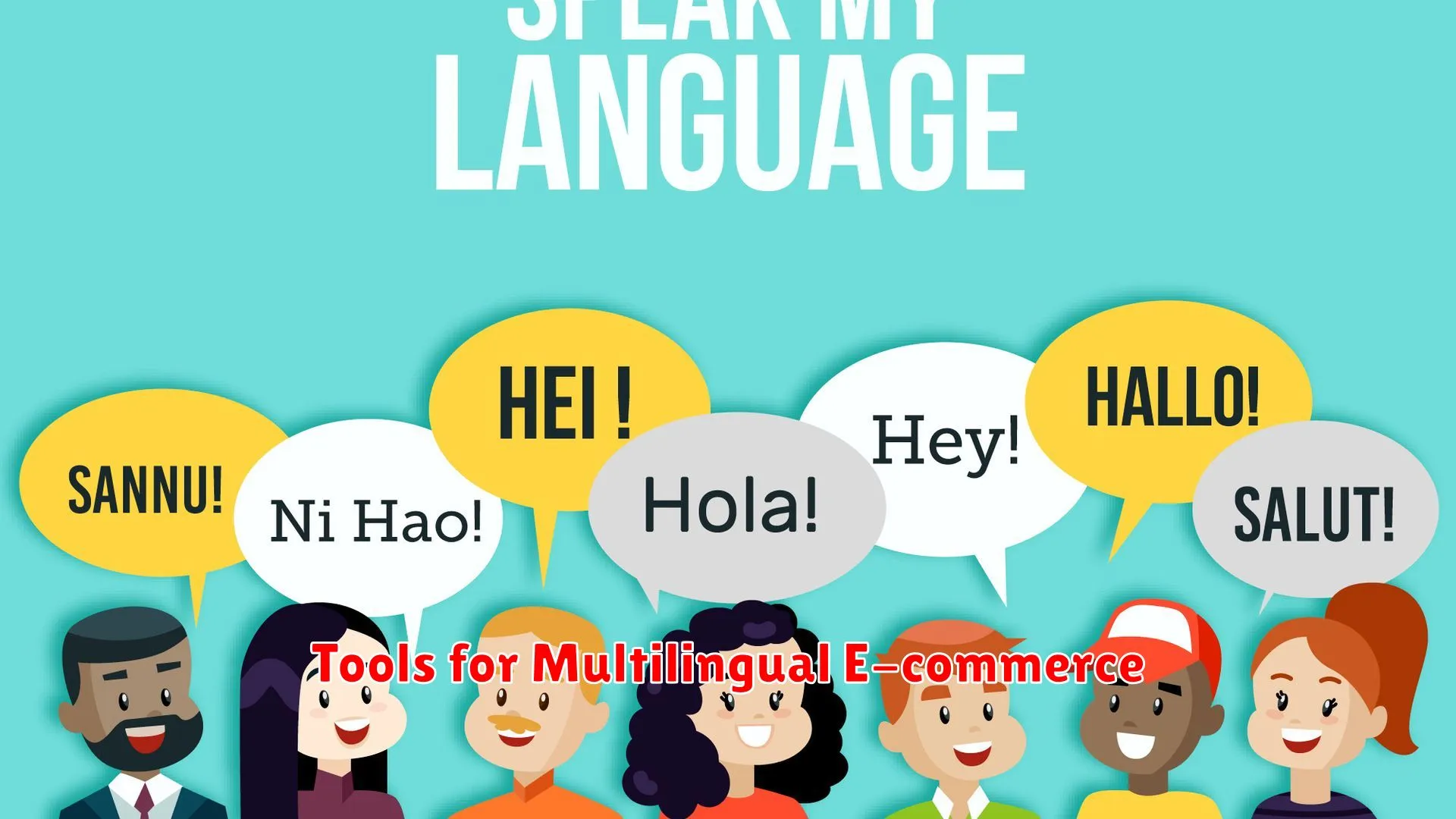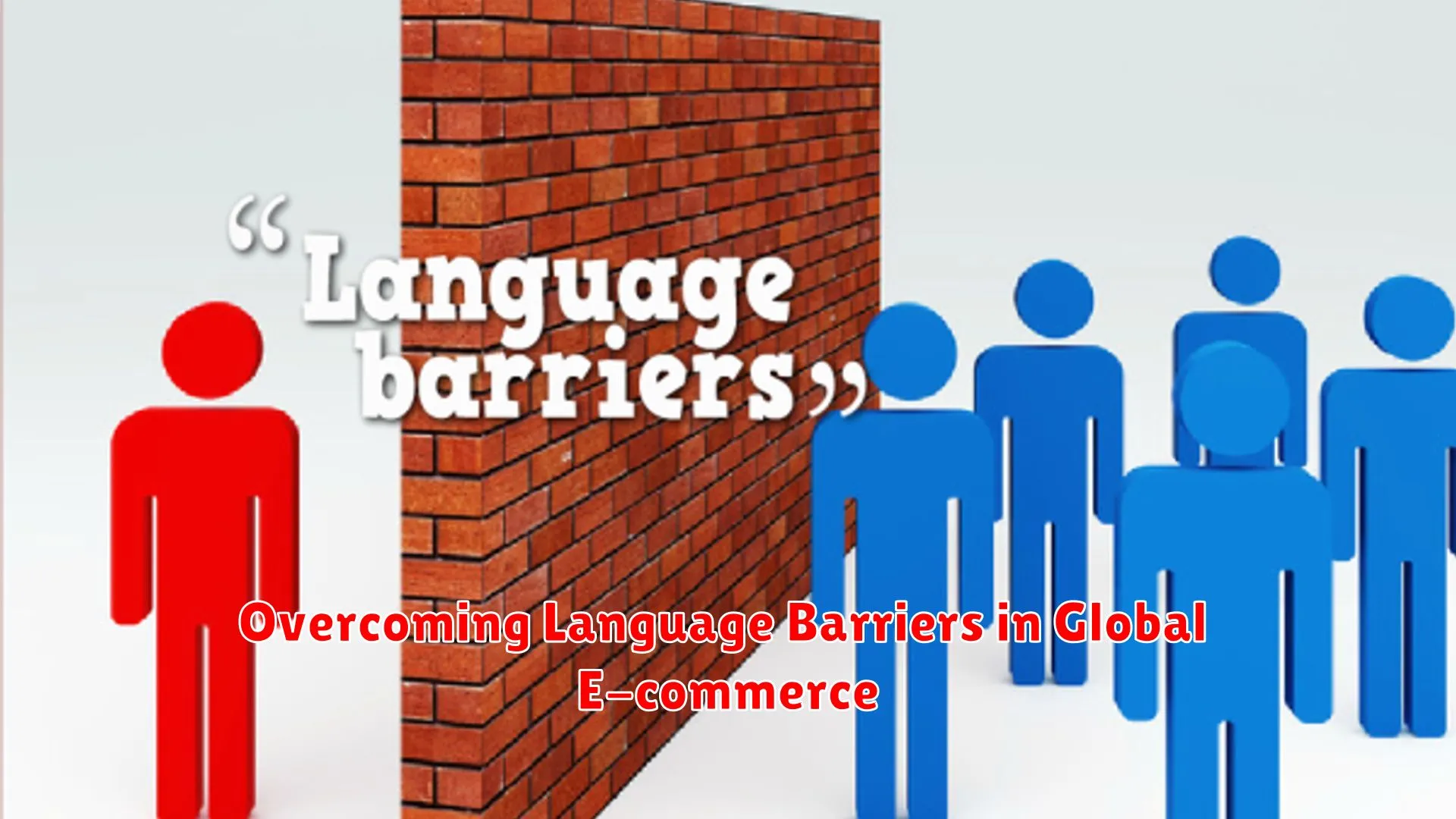In the fast-paced world of global e-commerce, overcoming language barriers is crucial for success. Discover how businesses are tackling this challenge and finding innovative solutions to connect with customers worldwide.
The Importance of Language Localization

Language localization plays a crucial role in overcoming language barriers in global e-commerce. It involves adapting content, products, and services to meet the linguistic, cultural, and regulatory requirements of a specific target market or region.
Enhancing User Experience: By localizing your website or e-commerce platform, you can provide a personalized experience to users in different regions. This includes translating product descriptions, user interface elements, and customer support materials into the local language.
Building Trust and Credibility: When consumers can access information in their native language, it fosters trust and credibility. Localization shows customers that you understand their needs and respect their culture, leading to increased brand loyalty and customer satisfaction.
Expanding Global Reach: Effective language localization enables businesses to expand their reach into new markets seamlessly. By speaking the language of your target audience, you can connect with potential customers who prefer to shop in their native language.
Compliance with Legal Requirements: Localization also ensures compliance with legal and regulatory standards specific to each region. This includes adhering to language requirements for product labeling, privacy policies, and terms of service, helping businesses avoid potential legal issues.
Gaining Competitive Advantage: In the competitive landscape of global e-commerce, localization can be a key differentiator. Businesses that invest in language localization demonstrate a commitment to meeting the diverse needs of customers worldwide, giving them a competitive edge in the market.
Best Practices for Website Translation

When it comes to overcoming language barriers in global e-commerce, website translation plays a crucial role in ensuring effective communication with customers from different regions. Implementing best practices for website translation can greatly enhance user experience, drive traffic, and ultimately boost sales.
1. Understand Your Target Audience
Prior to starting the translation process, it’s essential to have a clear understanding of your target audience. Consider cultural nuances, language preferences, and local customs to tailor your content accordingly. This personalized approach can help establish a deeper connection with customers.
2. Use Professional Translators
Opt for professional translators who are native speakers of the target language and have expertise in e-commerce. This ensures the accuracy, quality, and consistency of the translated content. Avoid relying solely on machine translation as it may lead to errors and misinterpretations.
3. Maintain Consistent Brand Voice
Consistency is key when translating website content. Maintain a consistent brand voice across all languages to strengthen brand identity and credibility. Ensure that the tone, style, and messaging align with your brand values and resonate with the target audience.
4. Optimize for SEO
Consider SEO techniques in the translated content to improve visibility and attract organic traffic. Conduct keyword research for each target market and incorporate relevant keywords and phrases naturally within the content. This can help enhance search engine rankings and drive more targeted traffic to your website.
5. Test and Iterate
Regularly test the translated website to ensure functionality, usability, and language accuracy. Gather feedback from users in different regions and be open to making iterative improvements. Continuously monitor performance metrics and user behavior to optimize the translation process for better results.
Cultural Considerations in Content Creation

When it comes to overcoming language barriers in global e-commerce, incorporating cultural considerations in content creation is paramount. Culture plays a significant role in shaping communication preferences, consumer behaviors, and how individuals perceive and interact with online content.
Language nuances: One of the key cultural considerations in content creation is understanding the nuances of language. It is crucial to ensure that the language used in your e-commerce platform resonates with the target audience in terms of tone, style, and idioms. Localization of content is essential to establish a connection with customers from diverse cultural backgrounds.
Cultural symbolism: Different cultures have varying symbols, colors, and images that hold specific meanings. Incorporating culturally relevant symbols in your content can enhance engagement and foster a sense of familiarity with your global audience. It’s vital to research and understand these symbols to avoid misunderstandings or offensive content.
Understanding consumer behavior: Cultural differences greatly influence consumer preferences and buying habits. By analyzing cultural norms, values, and habits, businesses can tailor their content strategies to align with the expectations of different consumer segments. This approach can lead to higher conversion rates and improved customer satisfaction.
Adapting marketing messages: Effective communication in global e-commerce requires adapting marketing messages to resonate with various cultural groups. Personalizing content based on cultural preferences, festivals, or traditions can significantly impact the success of marketing campaigns and promotional activities.
Tools for Multilingual E-commerce

When it comes to expanding your e-commerce business globally, overcoming language barriers is crucial. Implementing the right tools for multilingual e-commerce can greatly enhance your reach and success in foreign markets.
1. Translation Services
Utilize professional translation services to accurately translate your website content, product descriptions, and customer service communications into multiple languages. This helps to ensure clear communication with customers regardless of their language preference.
2. Multilingual Plugins
Integrate multilingual plugins into your e-commerce platform to enable visitors to easily switch between languages. These plugins can automatically translate your website content or allow you to customize translations to maintain consistency and accuracy.
3. International Payment Gateways
Offer international payment gateways that support various currencies and languages to cater to a diverse customer base. Providing a seamless payment experience in customers’ preferred languages can increase trust and conversions.
4. Multicultural Customer Support
Establish multicultural customer support channels with agents fluent in different languages to assist customers effectively. Having support available in multiple languages can enhance the overall shopping experience and build loyalty among international customers.
By leveraging these tools for multilingual e-commerce, businesses can overcome language barriers and create a more inclusive and engaging shopping environment for global customers.
Analyzing the Impact of Language on Global Sales

Language plays a crucial role in the success of global e-commerce ventures. When it comes to overcoming language barriers in the world of online sales, understanding the impact of language on consumer behavior and purchasing decisions is essential.
Cultural Relevance: One of the key factors affected by language in global sales is cultural relevance. Tailoring the language used on e-commerce platforms to resonate with the target audience’s culture can significantly impact sales. Understanding idioms, expressions, and cultural norms can enhance the customer experience and drive sales.
Trust and Credibility: Language proficiency influences the perceived trustworthiness and credibility of an online store. When customers can navigate a website in their own language, they are more likely to trust the brand and make purchases. Multilingual customer support further strengthens this trust and encourages repeat business.
SEO and Visibility: Language optimization is crucial for international SEO (Search Engine Optimization) and online visibility. Using the right keywords and language variations can improve a website’s search engine ranking in different regions, thus attracting more potential customers and boosting sales.
User Experience: The language used impacts the overall user experience on an e-commerce platform. Clear, concise, and culturally sensitive language can enhance navigation, product descriptions, and checkout processes, leading to higher customer satisfaction and conversion rates.
Localization Strategies: Implementing effective localization strategies, such as translating content, adapting currencies, and offering multiple language options, is imperative for breaking language barriers in global e-commerce. These strategies demonstrate a commitment to inclusivity and customer satisfaction.
Conclusion
Effective translation tools and cultural understanding are vital to overcome language barriers in global e-commerce, fostering trust and increasing sales worldwide.

